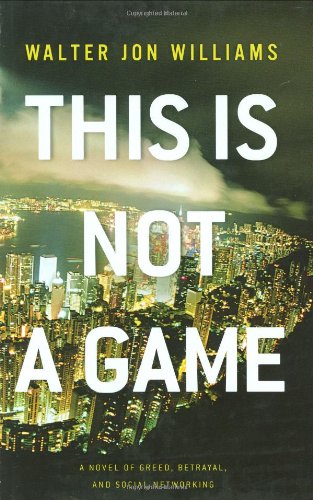What Dreams Within

Immigrants can have it hard. When I came to the states in '72, I didn't speak English all that well, and I was hopelessly obtuse when it came to picking up American customs. Üter Zörker, the Simpsons character in the lederhosen: that was me. Lucky for me, with my light skin and blond hair and blue eyes, once I got rid of my lederhosen I didn't stand out as an immigrant - not in Utah suburbia, anyway. So, while I experienced some of the trials that immigrants go through, I certainly had none of the trouble someone from Mexico or from Africa might have had.
Ekaterina Sedia is also an immigrant. She is from Russia, and, like me, she probably manages to blend in well enough. But there must be some part of being an immigrant that we all have in common, which transcends culture and perhaps even gender.
The House of Discarded Dreams tells the story of Vimbai, a young woman from Zimbabwe who is struggling to come to terms with herself as both American and Zimbabwean. Vimbai's mother is no help to her; everything is political, and difficult, and Vimbai, much like her father, prefers to avoid conflict. So when she comes across an ad for a house mate, she makes enquiries, and soon joins Maya and Felix in a ramshackle beach house.
The house and its inhabitants work a dreamlike magic on Vimbai. She finds a psychic energy baby stuck in the phone, and one day the ghost of her departed grandmother joins them. That night the sea rises and takes the house off its foundations. When Vimbai wakes in the morning, they are adrift in the middle of the ocean, with no land in sight. Instead of panicking, the three humans and their otherworldly companions make the best of things. The house seems to contain the stuff of their dreams, and they spend time exploring. Things work well enough, until they find themselves besieged by their own nightmares. Not to mention they're running out of things to eat.
Writing in the vein of magic realism, Sedia displays skill and facility few authors have. This is no jumbled mess of dream images. Instead, Sedia manages to weave together the more or less real experiences of Vimbai and her companions with stories from Africa, from Zimbabwe. Vimbai's diffidence towards her origins are thoroughly explored, and from my own experience her journey towards accepting her origins is realistic. Sedia also makes it moving and insightful, something that even non-immigrants will appreciate.
The result is an enchanting little story. Psychic energy baby gives it... seven thumbs up!
Labels: african studies, Ekaterina Sedia, immigration, magic realism, the house of discarded dreams, zimbabwe

